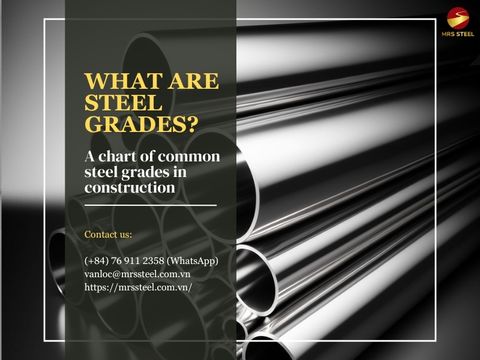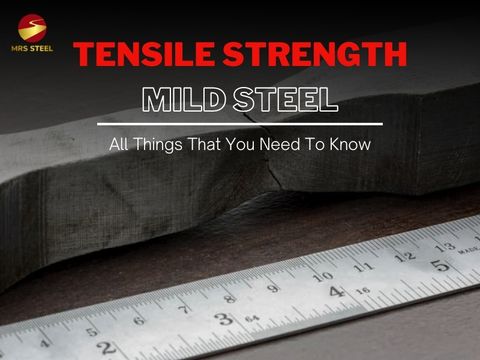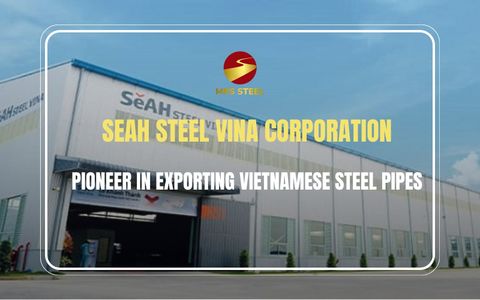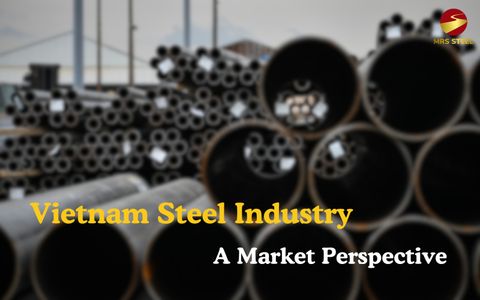How many types of steel are there? Distinguish the characteristics of each type

BlogDate: 03-11-2023 by: Ngoc Cam
The chemical elements in steel alloys and their content can regulate the hardness, elasticity, ductility, oxidation resistance and strength of steel.
Because of this diversity, we currently have more than 3,000 different types of steel. So how do these steel types differ in terms of grade, properties and structure? In this article, MRS Steel will introduce you to the 4 most common steel along with essential information about each type.

Understanding the various types of hardened steel is crucial for selecting the right material for your application
How many types of steel are there?
Steel is classified according to its composition, depending on the carbon content and elements. We have 4 steel types including:
Carbon steel
- Carbon steel has two main components: iron and carbon, other elements account for an insignificant proportion. Despite having only two elements, steel variety is used for different applications by adjusting the carbon content.
- Low carbon steel: carbon content less than 0.25%, high ductility, specialized for making wires, bolts, pipes
- Medium carbon steel: 0.25-0.6% carbon content helps the steel have high strength and lower ductility than low carbon steel, used to make gears and rails.
- High carbon steel: carbon content 0.6-2% and often used to make nails and sharp tools.

Stainless steel
Stainless steel is well known in the field of manufacturing medical equipment and instruments, but in fact its application range is much larger. They are iron alloys containing a minimum of 10.5% chromium, which imparts a bright finish and excellent corrosion resistance. Not only has its aesthetic value, chromium is also known for its extremely good oxidation resistance and high durability. Therefore, stainless steel is very popular, widely used in the field of household appliances, furniture,...
There are 4 main stainless steel types, including:
- Austenic: High chromium and nickel content enhances corrosion resistance, good durability, easy to clean, used to produce kitchen equipment
- Ferritic: Economical due to low carbon and nickel content, known for its aesthetic appeal and bright finish, commonly used in the automotive industry.
- Austenitic - Ferritic (Duplex): The combination of austenitic and ferritic alloy increases the carbon content, providing twice the strength, ductility and corrosion resistance
- Martensitic: Martensitic alloy undergoes rapid cooling so it has good plasticity and heat resistance, often used for making medical tools, scissors,...

Stainless steel is renowned for its corrosion resistance and durability in various industrial applications
Alloy steel
Alloy steel combines many different elements with concentrations ranging from 1-50% to change the mechanical properties of the product. Depending on the proportion of alloying elements, we have 3 main types of steel including:
- Low alloy steel: total content of other metallic elements is less than 2.5%
- Medium alloy steel: total content of other metal elements 2.5-10%
- High alloy steel: total content of other metal elements is over 10%.
- In the fields of construction and household appliances, low alloy steel is preferred for its strength, thanks to the presence of elements like manganese, chromium, silicon, nickel, and more, all of which are under 10%.

Alloy steel: Mixed elements for varied properties
Tool steel
Tool steel has high carbon content (0.7 - 1.4%) and low S and P impurities (< 0.025%). Going through the process of tempering at high temperatures and cooling quickly, repeatedly, helps tool steel be durable and heat resistant. They are often used in the fields of tool and machinery manufacturing.
Depending on the final product, the source of tool steel materials is also different:
- Air - hardening: Increasing the chromium content in the composition helps steel to be exposed to high temperatures without deformation.
- Water - hardening: Steel is continuously cooled during the production process, used to make common tools.
- Oil - hardening: Tool steel is protected by a layer of oil against wear resistance, often used for knives and shears.
- Hot - working: This is a type of steel that can withstand extreme heat and is often used in forging or casting.
- Shock - resisting: Ingredients include small amounts of carbon, silicon, and molybdenum to increase the hardness of steel, suitable for hole punches and chisels.

Learn about steel classifications
In addition to the 4 common types of steel mentioned above, more than 3,000 remaining types of steel can be classified based on the following criteria:
- Composition: Content of steel, iron, carbon and some other chemical elements (Si, Mn, P, S, Cr, Ni,...).
- Treatment method: pickling and oiling method, hot rolling, cold rolling, hot-dip galvanizing,...
- Production method: Electric furnace, continuous cast,...
- Microstructure: Austenitic, ferritic, martensitic,...
- Physical strength: ASTM, JIS, BS,... standards
- De-oxidation process: killed or semi-killed,...
- Heat treatment: annealed, tempered,...
What are different grades of steel
Steel grade is a term used to denote the bearing capacity of steel. There are many different steel symbols associated with the "Production Standards Applied" of that steel. Currently, two typical steel grade classification systems include:
- ASTM: Alphanumeric classification represents the overall classification and specific properties of steel, such as ASTM A123, ASTM A53/A53 - 18,...
- SAE: Classification with 4 digits indicating steel types, alloying element content (first two digits) and carbon content (last two digits).
Address to import genuine steel at good prices in Vietnam
According to WorldSteel's report, Vietnam shipped 19 million tons of crude steel in 2023, ranking 12th worldwide. In addition, Vietnam's steel industry ranked 14th in the list of countries/territories with the most exports in the world (11.2 million tons). Currently, Vietnam is constantly promoting investment and developing infrastructure and modern production lines to improve the quantity and quality of the steel industry. Many famous Vietnamese steel brands in the world market such as Hoa Phat, Hoa Sen, Ton Dong A, Nam Kim,...
MRS Steel is a leading unit in the field of supporting Vietnamese steel imports for many partners around the world. With more than 12 years of experience, possessing a team of market analysis, sourcing, and professional logistics experts, MRS Steel is confident in being able to meet all customer orders at the most competitive prices.
For detailed information about the Vietnamese types of steel, please contact via Email vanloc@mrssteel.com.vn or Whatsapp:+84 76 911 2358 for enthusiastic support.























































